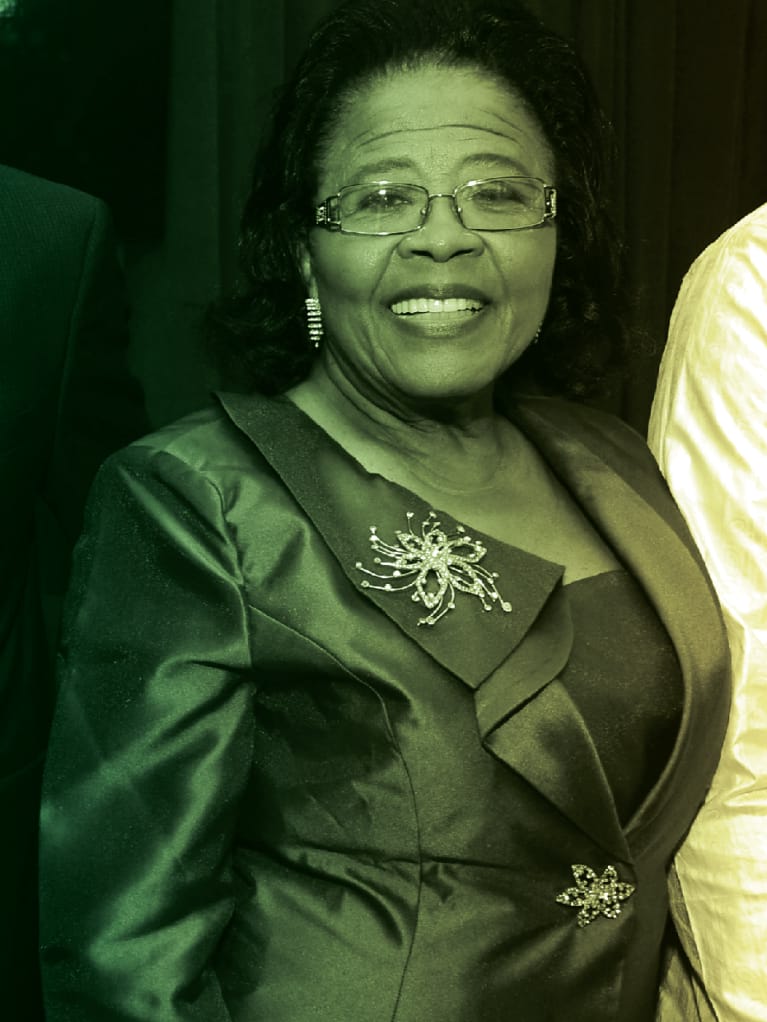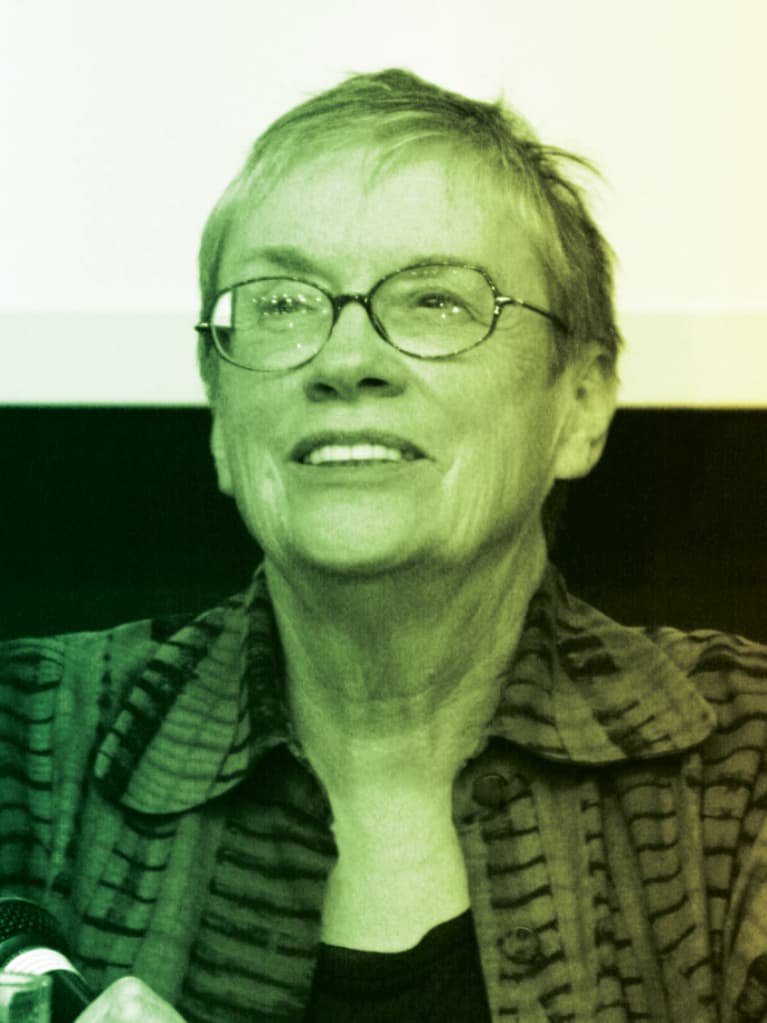Hiring in the Age of Ageism
In a youth-obsessed employment market, age discrimination could cost your company strong candidates and diverse teams.
Introduction
Consider it a major disconnect in hiring: On the one hand, many recruiters put a premium on “high-performers” with “proven experience,” while on the other they are increasingly looking for “digital natives”—members of the demographic raised in the age of online technology and thus by definition too new to the workforce to have proved much of anything.
Indeed, as employers’ desire to snag tech-savvy Millennial workers reaches a fever pitch, you may notice a shift in hiring managers’ vocabulary (or even your own), away from “experienced” and “seasoned” and toward “high-potential” and “energetic.”
That’s where you need to be careful, since such terms can be viewed as code for “young.” “The problem with ageism is that it’s really sneaky, it’s subtle,” says Michael S. North, an assistant professor of management and organizations at New York University’s Stern School of Business. “Age discrimination is more prevalent than people think.”
The experience of Brian Reid—an Internet pioneer who helped develop Alta Vista, one of the world’s first search engines—is a case in point. As North explained during a presentation at the 2017 SHRM Foundation Thought Leaders Solutions Forum on the multigenerational workforce, Reid was fired from his role as a Google engineer in 2004 after being told by supervisors and colleagues that he wasn’t a “cultural fit” and that he was “slow,” “sluggish” and “too old to matter.”
Reid, then in his early 50s, sued the search giant for age discrimination, and California’s Supreme Court ruled in his favor, noting that “stray remarks” may be considered evidence of age discrimination.
It’s an important lesson for HR professionals, who are often tasked with writing job descriptions and conducting early interviews: Words matter, and using the wrong ones can land you in a world of trouble.
[SHRM members'-only HR Q&A: What federal laws prohibit job discrimination?]
A Maturing Problem
Ageism is among the most common forms of employment discrimination. In 2017 research published by the Federal Reserve Bank of San Francisco, job candidates between the ages of 29 and 31 received 35 percent more callbacks than those ages 64 to 66, despite having similar qualifications and skills on more than 40,000 dummy applications.

And given the workplace’s shifting demographics, the problem is only expected to get worse. After weathering financial challenges and employment gaps during the Great Recession, many Baby Boomers and members of Generation X plan to work past the traditional retirement age of 65. A May 2016 Gallup poll found that 31 percent of nonretired adults intend to remain employed until age 68 or older.
As a result, some 50 years after Congress passed the Age Discrimination in Employment Act (ADEA) of 1967, employers are facing an increase in age discrimination lawsuits. Last year, accounting giant PwC was hit with a class action claiming that the company’s “aggressive” recruitment of college students and recent graduates—to the exclusion of older job seekers—constituted age discrimination. And in October, a female engineer formerly employed by Verizon presented sufficient proof of Family and Medical Leave Act retaliation and age discrimination to win a $454,000 verdict, plus a $165,000 award of interest, attorney fees and costs.
“The number of age discrimination charges filed with the Equal Employment Opportunity Commission has risen 47 percent since 1999,” North says. In fact, the commission received 20,857 complaints of age discrimination in 2016—accounting for more than 20 percent of all discrimination charges.
In addition, according to an investigation by the New York Times and ProPublica, several large employers—including Verizon, Amazon, Facebook, Goldman Sachs and Target—have recently launched recruitment campaigns limiting ads to particular age groups, raising concerns about age discrimination.
All-Age Mixer
Regardless of your intentions, if you advertise for “digital natives” or focus your hiring almost entirely on recent college graduates, you risk both running afoul of the law and hurting your business.
For starters, taking such an approach can dramatically limit your candidate pool. Workers older than 65 make up the fastest-growing segment of the labor force, while the 35-54 age group is increasing in size much more slowly, according to data from the U.S. Bureau of Labor Statistics. The number of people ages 65 and older who are still working is expected to rise to 29 percent by 2060, from just 19 percent today. Recruiting older workers, then, gives companies an edge in finding the right talent—and in identifying workers who can relate to clients and customers of an older demographic as well.
Furthermore, research indicates that multigenerational workforces are more productive and have less turnover than those without age diversity.
Studies also show that, contrary to what many believe, there is no relationship between age and loss of innovation or overall job performance. In fact, older workers appear to be more comfortable with change than their Millennial counterparts.
Ultimately, a homogenous workforce—even one filled with highly coveted Millennials—can unwittingly stymie innovation. “Having a diverse workforce overall is phenomenal for cultivating different ways of approaching issues, solving a problem or creating a product,” says Stephanie Nelson, CEO of Denver-based BlueFire HR Consulting LLC. “If you don’t have age diversity, you’re really missing different perspectives and creating an organization in which everyone is thinking exactly the same way.”
Unfortunately, though, this kind of discrimination is insidious. While 64 percent of CEOs report having diversity and inclusion initiatives in place, a mere 8 percent include age as part of their efforts, according to PwC research.
“Many companies that take active steps to recruit from a variety of races, ethnicities and genders regularly list jobs as being appropriate for ‘new grads,’ ” says Kieran Snyder, CEO at Textio, an automated job-listing writing platform. “Sometimes the bias is neither fully conscious nor fully unconscious.”
(Young) Help Wanted
When companies list positions with minimum GPA or SAT requirements, they’re telling applicants that they’re looking for employees at a life stage where these assessments remain relevant—typically those within a few years of college graduation.
Sometimes the message can be even more indirect. “Meals included,” for instance, can imply an expectation that workers don’t have a family waiting for them to come home for dinner, Snyder points out.
Exclusionary adjectives extend beyond the ubiquitous “overqualified,” adds Oneida Blagg, SHRM-CP, executive officer for equity, diversity and inclusion for a group of community colleges in Washington state. “Sometimes in candidate evaluations, words like ‘tired’ or ‘not energetic’ appear as a reason to reject a candidate. It’s a way to mask age discrimination, and people might not even be aware that they’re doing it,” says Blagg, who has worked at several organizations ranging in size from 1,000 to over 3,000 employees.
Another facet of the issue is that many startups and nonprofits select younger employees due to budget constraints. “We have a hard time attracting more-mature candidates unless it’s an executive director role,” says Dave Martin, SHRM-CP, head of people operations for Spark Program, a Chicago-based nonprofit with 50 employees that works with middle school students.
But that doesn’t mean junior roles should become synonymous with younger hires, he says. The key to ensuring that this doesn’t happen is to craft job descriptions that are age-neutral and to consider all applicants, regardless of age inferred from a resume.
Beyond the Offer Letter
Age discrimination occurs outside of hiring situations as well. Employees can encounter implicit bias when they voice an interest in earning advanced degrees in their 40s or 50s, for example. “They hear, ‘How old are you going to be by the time you’re done? How old are you going to be by the time this investment pays off?’ ” Blagg says. “This can discourage people”—which, in turn, can prevent them from pursuing the degrees or certifications that could land them a promotion or new job.
Having a robust program to ensure compliance with the Americans with Disabilities Act is also critical. “As the workforce continues to age, people will need more assistance,” Blagg says.
And think twice before initiating any kind of layoff that disproportionately affects those with a long tenure at your company. “In my experience, termination decisions are the most frequently challenged decisions in terms of age discrimination, given the impact on the individual,” says William Milani, vice chair of the board of directors at Epstein Becker Green, a New York City law firm with 600 employees.
Any time you must oversee a large reduction in force, carefully review the selection process to determine whether the proposed terminations might have a disparate impact on one group. “You have to examine whether an argument could be made that there’s statistical significance to selection processes that adversely affect older workers,” Milani says.

For example, if a hiring manager has been asked to select 20 percent of her team for downsizing—and only gray-haired heads are on the chopping block—it’s time to ask questions. Are there well-documented performance issues, or could discrimination be rearing its ugly head?
These decisions get complicated when an employer doesn’t appropriately manage its workers. If someone works at a company for years amid unaddressed performance problems, for example, a supervisor’s failure to communicate and document those issues can lead to serious trouble. As the employee ages and the issues continue, disciplinary action or termination can lead to age discrimination claims.
A lack of early intervention “can easily create a situation in which an employee says, ‘My feedback has always been good; I’ve received increases and bonuses. But now that I’m in my 50s or early 60s, suddenly my performance is no good. It’s my age, not performance’ ”—even when real performance shortfalls exist, Milani says.
[SHRM members'-only how-to guide: How to conduct a layoff or reduction in force.]
Putting the Blinders On
The first step to preventing ageism is to develop an overarching talent acquisition strategy that spells out the skills and background needed for each role. Without one, you risk “falling into a really big hole of ‘Oh my goodness, we just hired a bunch of 22-year-olds for these 20 positions that really need someone with decades of experience,’ ” Nelson says.
It’s also a good idea to create explicit goals for external recruiters. “I think an initial step can be that if there are third-party agents involved in a company’s hiring, those agents don’t make assumptions about the age of the person” being sought for the position, says Dana Connell, an employment attorney at the Chicago office of the law firm Littler Mendelson.
This is important because anyone involved in recruiting—even a third party—must be aware of age-related issues, according to a 2001 case, Mathis v. Phillips Chevrolet. “The court held that [leaving] managers in ignorance of basic features of the Age Discrimination in Employment Act is an ‘extraordinary mistake’ for an employer to make,” Connell says.
It’s not enough to simply be aware of the ADEA. Every state also has its own laws against age discrimination—and there are important distinctions among them, says Laurie McCann, a senior attorney with the AARP Foundation in Washington, D.C. Some states, for instance, may prohibit age discrimination by employers with fewer than 20 workers, while others may limit their legislation to larger employers.
Also work to structure interviews around skill sets, rather than softer “fit” factors that can be a cover for discrimination. “We give interview templates and guidelines to all our clients,” Nelson says, to help them stick to questions related to skills and work experience, rather than personal topics.
“The biggest piece is having each interviewer fill out an objective evaluation at the end of the conversation,” she says. Rather than concluding an interview and asking the hiring manager for her overall impression, it’s more helpful—and fair—to have her sum up her opinion of the candidate’s skills.
[SHRM members'-only toolkit: Guidelines on interview and employment application questions.]
Advertising AgeismWhile HR leaders and hiring managers may not intend to exclude older workers when they use these common phrases in job descriptions and interview assessments, that can be the unfortunate result, experts say. | |
| Words to Watch | Why They Matter |
“Digital native” | May discourage qualified applicants who didn’t come of age with digital and mobile tech—even some as young as their 30s. |
“High-energy” | Often a euphemism for young. |
| “Ninja” or “guru” | These trendy buzzwords are likely unfamiliar—or unappealing—to older candidates. |
| “GPA of 3.5 or higher” | Sends the message that you’re looking for employees at a life stage where these assessments remain relevant. |
| “Overqualified” | Since experience often correlates with age, this term can be used to mask age bias. |
| “Meals included” | Implies an expectation that workers don’t have a family waiting for them to come home for dinner. |
| “Bad cultural fit” | Can be problematic if your culture is overtly youth-oriented. |
Talking Back to Bias
Be brave in challenging implicit ageism when you perceive it. “I’ve had hiring managers in every industry say, ‘Oh no, I don’t like this candidate but I like that candidate.’ Well, candidate A may be … the Baby Boomer but they have the right skill set, and Candidate B is a Millennial and really doesn’t have the experience we’re looking for, but the hiring manager wants to hire the Millennial,” Nelson says. “People need to push back and say, ‘I don’t agree with this.’ ”
Of course, it can get uncomfortable to imply that colleagues are letting bias sway their thinking. Having more general conversations on the topic at the start of the process can make that easier, says Mike Teichberg, SHRM-CP, principal HR consultant for The OIS Group in Coral Gables, Fla., which has 105 employees. Talk openly and often, for example, about the subconscious influence that photos on LinkedIn or Facebook can have on hiring.
“Typically, we’ll look at the application and make a decision if this person’s qualified without looking at any kind of social media,” he says. “That way, we ensure we’re not being biased by the picture.”
“Typically, we’ll look at the application and make a decision if this person’s qualified without looking at any kind of social media,” he says. “That way, we ensure we’re not being biased by the picture.”
Similarly, perform a background check only after a candidate has accepted an offer, as the report includes the individual’s birthdate. “While I understand why some companies want to run the background check as part of the vetting process, to truly be able to be age-neutral, running the check post-offer acceptance should be standard,” Teichberg says.

Some experts also recommend having a group of employees meet each candidate at the same time. “I find the more employees that participate in an interview, the more balanced the approach—especially if you’re deliberate about core values and reminding people what we’re looking for in a role,” Martin says.
And when you hear employees make comments or jokes about older workers’ supposed lack of tech savvy, call them out. “It’s been my experience that while people react very quickly and rightly to negative comments about race, ethnicity and sex, they still chuckle about the ‘old dog, new tricks’ comments,” Milani notes.
Finally, make training opportunities available to employees of all ages, McCann advises. Don’t assume that older workers lack the motivation or ability to keep their skills current.
Good Hires at Every Age
Following these practices helped Teichberg and Martin achieve age diversity even while working in what many think of as “young” fields.
In a previous job at a digital marketing agency, Martin hired a candidate for an entry-level developer role who had two decades of e-commerce experience. He’d left an earlier position to earn a four-year degree in computer science and was willing to accept a lower salary due to the transition. “It worked out wonderfully because he had not just the technical skills, but also the softer skills,” Martin says. “He wound up being team lead.” Still, Martin remembers having to stick his neck out to advocate for the candidate. “It’s almost like we as humans have a bias against allowing someone to do something different with their lives.”
Teichberg, for his part, used to work at an educational-technology startup that gravitated toward young instructors. “They were kind of operating under the assumption that older teachers would have trouble with the technology,” he remembers. To counteract that, “I purposely went after teachers who still had active certifications but had retired.”
As a result, he hired more than 40 people over the age of 55—“and they were some of the best performers because they were doing it as their primary role instead of as a second or third job,” he says. “They were passionate to be working with kids again, but also to be learning technology and be part of this new ed-tech movement.”
It’s telling that both HR executives had to push back to ensure that the older candidates were hired. “[Ageism] sneaks up on us,” North says. “We really don’t think about age and aging until later in life. But we need to examine the issue and recognize the value that comes with age and experience.”
Kate Rockwood is a freelance writer based in Chicago.
Was this article useful? SHRM offers thousands of tools, templates and other exclusive member benefits, including compliance updates, sample policies, HR expert advice, education discounts, a growing online member community and much more. Join/Renew Now and let SHRM help you work smarter.


